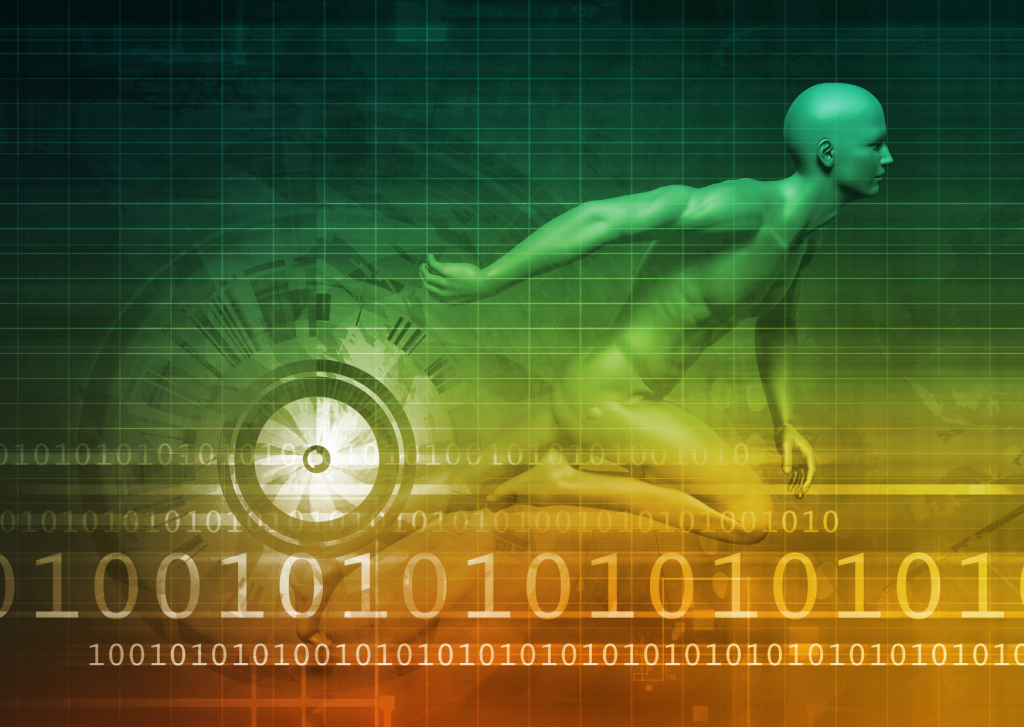Top 12 Free Online Courses for Data Science
Find your perfect college degree
We witnessed the dawning of the new era of big data. This massive advancement in technology as it relates to the gathering, storage, processing, or analysis of data treatment of information definitely makes life easier for people and businesses!
Some ten years ago, big data presented one of the toughest challenges for enterprises. Back then, the primary focus was how to create a solution and framework that could store data securely.
When Hadoop and other frameworks solved the storage issues, the focus shifted to processing these data.
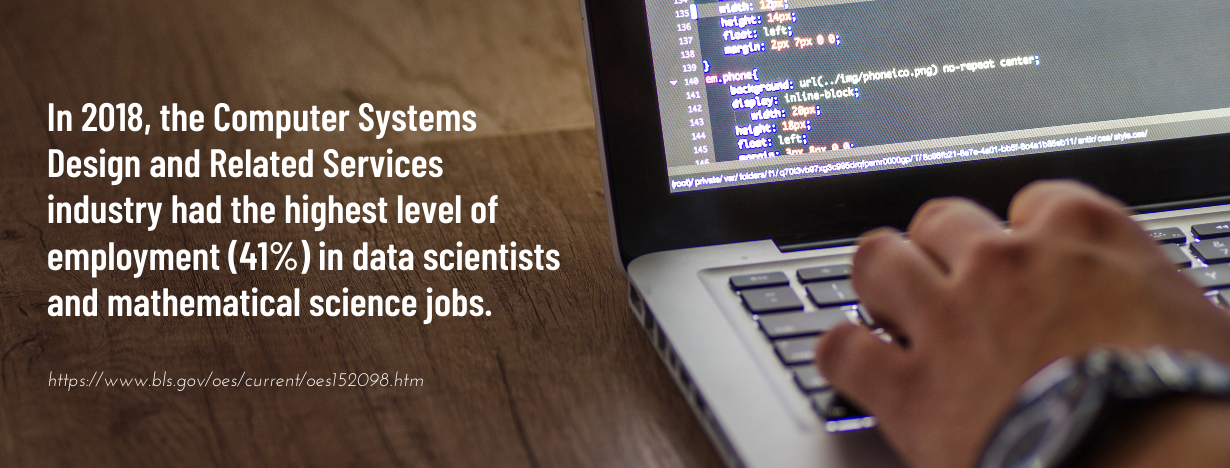
Enter Data Science. All those interesting ideas we usually see in Hollywood Science fiction films may turn into a reality, thanks to Data Science. Simply put, data science is hailed as the future of artificial intelligence.
Everybody must understand what Data Science is, and how Data Science knowledge can significantly add value to your business.
So, is data science for you?
The majority of successful data scientists have skills in programming, math, and statistics. As a data scientist, you collect data and information before you sort and analyze them. Different types of data sources are used when solving problems and dealing with questions.
Your analysis will use a statistic in employing complex concepts like machine learning and data visualization. If you find yourself interested in identifying trends and patterns, no doubt, data science is the best field for you.
The Top 12 Free Online College Courses for Data Science
The best thing about online classes these days is that the majority of these programs are offered for free from different online platforms. To help you with your course choices, here are 12 of the best free programs for data science you might want to try.
FOR BEGINNERS
Exploratory Data Analysis
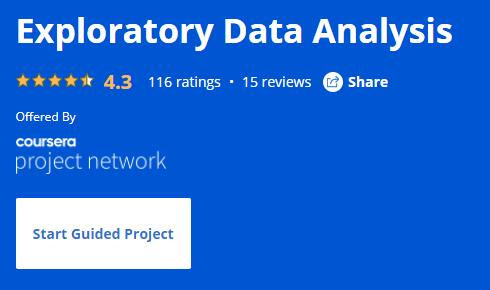
Johns Hopkins University, via Coursera
This 2-hour-long guided project is designed to help you understand what Exploratory Data Analysis is, how to make visual methods in analyzing the data, and how to analyze patterns, trends, and relationships in the data.
Specifically designed for beginner learners, this program plans to use Python to apply data analysis and data visualization and those who are presently taking or are already done taking a machine learning course.
You will learn the fundamentals of exploratory analysis. By the end of the program, your skill in creating maps will be significantly improved, which can help you fulfill your future career goals and be a good addition to your portfolio.
Best Features:
- 100% online and free
- Split-screen video
- Guided project. (The instructor will guide you step-by-step in a split-screen video)
- Certificates available
- Taught by Mo Rebai, a Data Science instructor from Johns Hopkins University
Introduction to Big Data
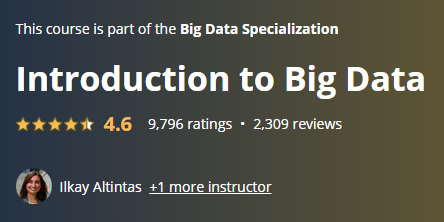
University of California, San Diego, via Coursera
This is a free online course and is part of the Big Data Specialization program of the University of California, San Diego. Delivered via Coursera, the program is perfect for newbies interested in data science and wish to understand why the Big Data Era came.
You will learn about the different core concepts and terminologies behind applications, systems, and big data problems. Find out how Big Data is useful for your career or business! This course introduces Hadoop, the most common framework used in Data Science. Hadoop has successfully made big data analysis more accessible and more efficient.
By the end of this course, expect to:
- Define the landscape of Big Data, including samples of big data problems in the real world like the three major sources of data: organizations, people, and sensors
- Use the 5-step process in getting value out of Big Data
- Distinguish what are and are not big data problems
- Modify big data problems as data science questions
- Specify a solid explanation of the programming models and architectural components used for scalable big data analysis
- Review the value and features of core Hadoop stack components. The review must include the YARN resource and job management system, the MapReduce programming model, and the HDFS file system
- Correctly install and run a program through Hadoop
Best Features:
- 100% online and free
- Flexible deadlines
- Paid Certificate available
- Three weeks long, 17 hours worth of material
- Open for those new to data science. Prior programming experience is not necessary.
- Taught by:
- Ilkay Altintas (Chief Data Science Officer, San Diego Supercomputer Center)
- Amarnath Gupta (Director of Advanced Query Processing Lab, San Diego Supercomputer Center)
Python for Data Science
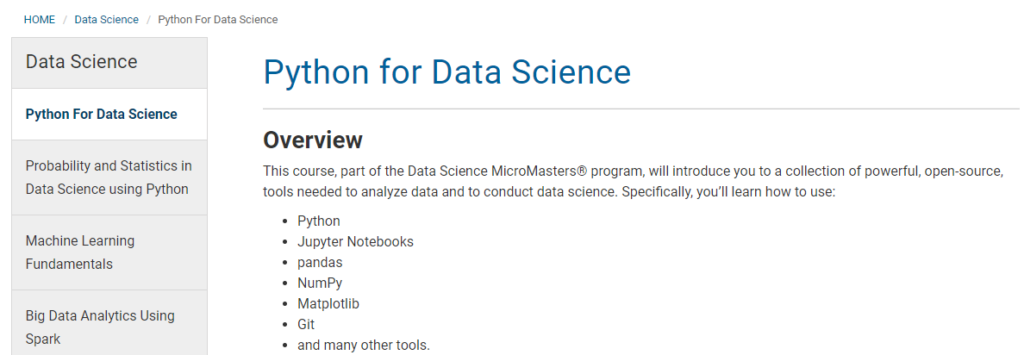
University of California, San Diego, via edX
This course is a part of the Data Science MicroMaster program at the University of California, San Diego. It introduces you to a compilation of powerful, open-source tools you will need to conduct data science and analyze data. You will specifically learn using:
- Jupyter notebooks
- Python
- Pandas
- Matplotlib
- Numpy
- Git
- And so many more tools
All these tools are taught within the framework of solving compelling problems in data science. Once you complete the course, you can easily find answers in large datasets by using Python tools to import data, explore it, learn from it, analyze it, and visualize it. In the end, you get to generate sharable reports easily.
When you learn these skills, you also become a part of a global community that constantly seeks to explore public datasets, build data science tools, and discuss evidence-based findings. Finally, this free online course gives you the foundation you need to succeed in later courses in the Data Science MicroMasters program.
Best Features:
- 100% online and free
- Paid Certificate available at $350
- The course lasts ten weeks, at 8-10 hours a week
- Self-paced
- Designed for advanced learners
- Taught by Ilkay Altintas and Leo Porter
Mastering Data Analysis in Excel
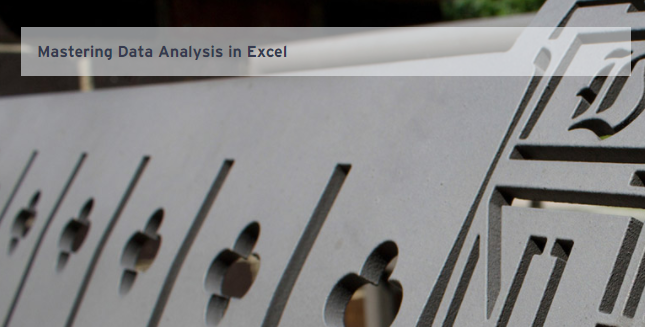
Duke University, via Coursera
This free online course heavily focuses on math- particularly data analysis theories and methods- not necessarily on Excel. Here, Excel is used to do calculations. All the mathematical formulas are given in Excel spreadsheets, but this course does not cover Visual Basic, Excel Macros, Pivot Tables, and other intermediate-to-advanced Excel functionality.
The course prepares you to create and implement accurate predictive models based on data. In the final part of this program, you will assume a business data analyst job for a bank. You will design two different models to pinpoint which credit card applicants should qualify and which ones should be rejected.
The first data model focuses on minimizing default risk, while the second is maximizing bank profits.
Best Features:
- 100% online and free
- Paid Certificate Available
- Flexible deadlines
- Takes about 21 hours to complete
- Taught by:
- Jana Schaich Borg (Assistant Research Professor of the Social Science Research Institute)
- Daniel Egger (Executive in Residence and Director, Center for Quantitative Modeling, Pratt School of Engineering at Duke University)
FOR INTERMEDIATE LEARNERS
Hadoop Platform and Application Framework
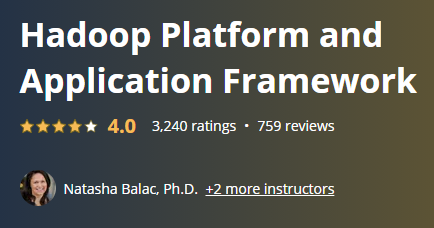
University of California, San Diego, via Coursera
If you’re still a new programmer who wishes to understand the basic tools used in wrangling and analyzing big data, this free online course is for you.
Even without prior programming experience, you still get the chance to walk through hands-on samples with Spark and Hadoop frameworks.
These two frameworks are the most prominent in the data science industry. As you go through this five-week-long class, you will become more comfortable explaining the components and the basic processes of the Hadoop architecture, execution environment, and software stack.
Assignments are also given to learning how data scientists apply key techniques and concepts (like MapReduce) to solve big data problems. The syllabus of this online course includes:
- Hadoop Basics
- Introduction to the Hadoop Stack
- Introduction to Hadoop Distributed File System (HDFS)
- Introduction to Map/Reduce
- Spark
Best Features:
- 100% online and free
- Shareable Certificate
- Paid Certificate Available
- Five weeks long, 25 hours worth of material
- Taught by Natasha Balac, Ph.D., Interdisciplinary Center for Data Science, Qualcomm Institute, and Paul Rodriguez, Research Programmer, San Diego Supercomputer Center (SDSC)
Mining Massive Datasets
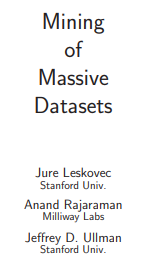
Stanford University, via edX
This course is based on Mining of Massive Datasets authored by Jure Leskovec, Anand Rajaraman, and Jeff Ullman. Coincidentally, all three authors also happen to be the professors of this online program.
Published by Cambridge University Press, the book is downloadable for free. The materials used in this course are almost similar to Stanford’s CS246 course.
Topics include MapReduce systems and algorithms, PageRank and Web-link analysis, algorithms for data streams, locality-sensitive hashing, Clustering, Frequent itemset analysis, social-network graphs, machine-learning algorithms, and dimensionality reduction.
Best Features:
- 100% online and free
- Paid Certificate available at $149
- Self-paced
- Designed for Advanced learners
- Taught by no less than the book authors themselves, Jure Leskovec, Anand Rajaraman, and Jeff Ullman.
Introduction to Computational Thinking and Data Science
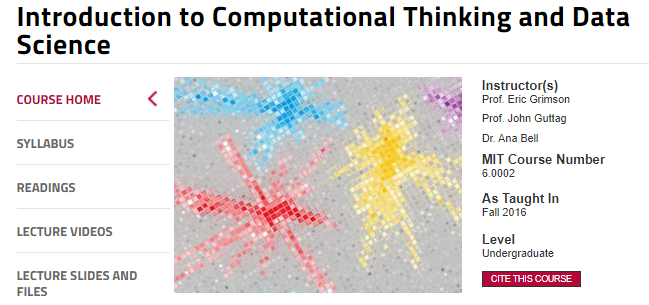
Massachusetts Institute of Technology via edX
This 9-week long free online course teaches you how to use computation correctly to achieve different goals. You are also introduced to a short background to several topics about solving computational problems.
This course is right if you have some Python programming experience and have a basic understanding of computational complexity.
In this class, most of your time is spent on writing programs to apply the concepts discussed in this program. The topics included in this course are:
- Advanced Programming in Python 3
- Dynamic Programming
- Knapsack Problem, Graphs, and Graph Optimization
- Plotting with Pylab Package
- Probability, Distributions
- Random Walks
- Curve Fitting
- Monte Carlo Simulations
- Statistical Fallacies
Best Features:
- 100% online and free
- Self-paced
- Ideal for Intermediate level learners
- Shareable Certificate
- The course is nine weeks long, 14-16 hours per week
- Taught by John Guttag and Eric Grimson
Digital Marketing Analytics in Practice
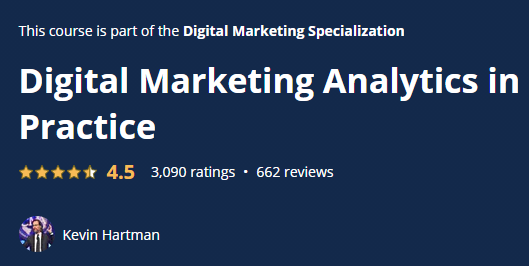
The University of Illinois at Urbana-Champaign (Coursera)
To be a successful brand, strike the right balance between science and art! Digital Marketing Analytics Practice is part of the Digital Marketing Specialization program offered by the University of Illinois Urbana-Campaign. It introduces you to the science behind web analytics while keeping a close eye on the use of digital space numbers.
This program aims to give you the background needed to employ real-world challenges that many online marketers must go through every day.
This second in a two-part series strongly focuses on your practical abilities and skills as an analyst. You need to become successful in the digital business world.
Course Syllabus:
- Course Overview and The Art of Analytics
- Storytelling with Data
- Bellabeat Case Study
- The Future of Analytics
Best Features:
- 100% online and free
- Shareable Certificate
- Flexible Deadlines
- Takes 20 hours to complete
- Intensive lectures on analytics, digital marketing, marketing analytics, and marketing performance
- Taught by Kevin Hartman, Visiting Professor and Head of Analytics at Google, Gies College of Business
FOR ADVANCED LEARNERS
Data Science & Agile Systems for Product Management

University System of Maryland, University of Maryland, College Park, via edX
This self-paced, free online course will teach you the processes and paradigms and introduce you to the main technologies that make the data-driven product organization the most challenging competitor in the field.
Designed for intermediate-level students, the course contents are laid out in a linear fashion. Each lesson gradually progresses either chronologically or in scaffolding concepts. The instructor also provides relevant examples to undergird the concepts.
Course Syllabus:
Module 1: Agile Systems Engineering
- Module 2: DevOps Principles for Business Agility
- Module 3: Data Science for Product Risk Management
- Module 4: Implementing Data-Driven Controls Using Technology and Teams
Best Features:
- 100% online and free
- Paid Certificate Available for $199.00
- Self-Paced
- Ideal for Intermediate learners
- Taught by John Johnson
Data Science: R Basics
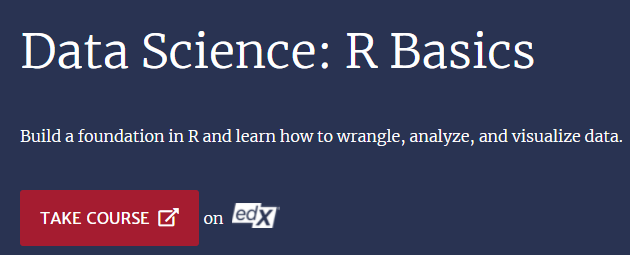
Harvard University, via edX
This course is Harvard University’s first Professional Certificate Program in Data Science, and you will learn the basics of R programming. Although R programming is relatively challenging, you can better retain this language by learning to solve a problem.
You will learn, for instance, a real-world dataset surrounding US crimes. Learning R skills is important to answer important questions about the differences in crimes across the different states.
The course will discuss R’s data types and functions and teach you how to operate on vectors and use the more advanced functions such as sorting.
“If else” and “for loop” commands are also discussed to teach you how to apply these general programming commands. Because of the constant demand for highly skilled data science practitioners today, this course will prepare you to handle real-world data analysis challenges.
Best Features:
- 100% online and free
- Paid Certificate Available for $149.00
- Self-paced
- Eight weeks long, 1-2 hours per week
- Suitable for beginners
- Taught by Rafael Irizarry, Professor of Biostatistics, T.H. Chan School of Public Health
High-Dimensional Data Analysis

Harvard University, via edX
Dig deeper into the world of data analysis and interpretation with this free online Data Science course from Harvard/edX.
For starters, you will learn about mathematical definitions of distance and use this to encourage using SVD (singular value decomposition) for dimension reduction of high-dimensional data sets and multi-dimensional scaling.
The batch effect is also discussed thoroughly, especially since this is the most critical data analytic problem in genomics today. You will find out how you can use these methods in detecting and adjusting for batch effects.
This course is divided into seven parts because of the diversity in the educational background of each student. You can either take the entire series or just choose individual courses that might interest you.
If you’re a biologist, you can skip some lectures on introductory biology. Or, if you’re a statistician, you can consider skipping the first two programs.
Best Features:
- 100% online and free
- Paid Certificate available at $149.00
- Self-paced
- Ideal for advanced learners
- Taught by Rafael Irizarry, Professor of Biostatistics, T.H. Chan School of Public Health, and Michael Love, Assistant Professors, Departments of Biostatistics and Genetics, UNC Gillings School of Global Public Health.
Big Data Integration and Processing
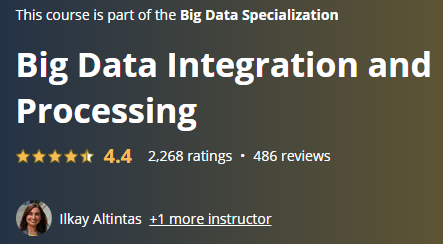
University of California, San Diego, via Coursera
Still new to data science? This free college online course is designed for you, although it’s advised that you complete the Intro to Big Data course first before joining this program.
You also don’t have to have prior programming experience needed to join the class, but it helps you know how to install applications and use virtual machines.
By the time you finish this free course, you should be able to:
- Gather data from big data management systems and example database
- Define the connections between big data processing patterns and data management operations needed to use them in larger analytical applications
- Classify when a data problem needs integration
- Execute simple data integration and processing on Spark and Hadoop platforms
Best Features:
- 100% online and free
- Paid Certificate available
- The class is six weeks long, with 17 hours worth of material
- Ideal for beginners, with or without a background in programming
- Taught by Ilkay Altintas and Amarnath Gupta
Frequently Asked Questions
What is Data Science?
Data Science is a combination of different algorithms, tools, and machine learning principles. The goal is to find hidden patterns out of raw data. But how does this field differ from what a conventional statistician has been doing for the longest time? The main difference lies between explaining and predicting.
A data analyst explains what is happening by processing the data history. Meanwhile, a data scientist discovers insights from it and adds different machine learning algorithms to recognize a specific event in the future.
Thus, a data scientist looks at data from different angles and, in some cases, from angles not previously known.
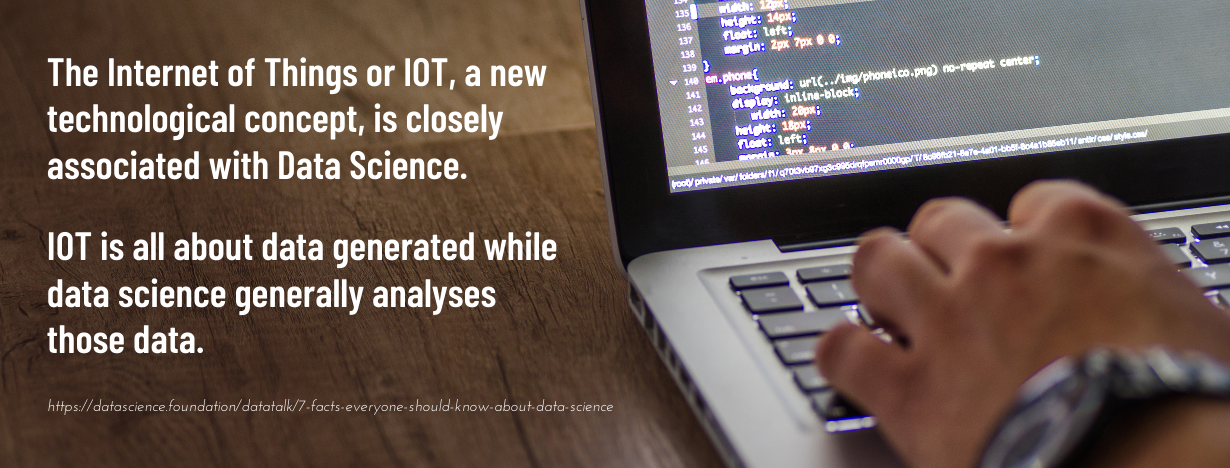
Simply put, data science is used to come up with predictions and decisions using predictive causal analytics, machine learning, and prescriptive analytics (predictive plus decision science).
Predictive Causal Analytics. If you want something that easily predicts the chances of a specific event in the future, applying predictive casual analytics is the best way.
Say, for instance, you are providing money on credit. Your main concern here is you can secure your customers’ future credit payments. You can create a project that can do predictive analytics of a customer’s payment history to predict if their incoming payments will be secured on time or not.
Prescriptive Analytics. If you want something that can intelligently make its own decisions or modify the model with dynamic parameters, prescriptive analytics it is.
This is relatively new in the data science field and is all about giving advice. This field predicts and suggests an array of suitable actions and associated outputs. One solid example is Google’s self-driving car.
All the data gathered by vehicles are used to train self-driving cars. Running algorithms in the data is the best approach to bring intelligence to these cars. This allows the car to decide which path to take, when to turn, or when to speed up or slow down.
Machine learning for making predictions. Say you are working for a finance company. You need to have transactional data; it’s best to create a model that can identify future trends- a model with machine learning algorithm capabilities.
This is considered supervised and falls under the supervised learning paradigm since you have the current data you plan to train your machines. For instance, you can train a fraud detection model by training it to use historical records of questionable purchases.
Machine learning for pattern discovery. If you have no parameters based on which to make your predictions, it’s important to find out the hidden patterns in the data set to come up with feasible predictions.
You only have the unsupervised model since you won’t have predefined levels for grouping. Clustering, therefore, is the most basic algorithm for pattern discovery in this case.
What Does a Data Scientist Do?
The majority of data scientists have advanced training in math, computer science, and statistics. The experience has an immense scope extending to data mining, data visualization, and information management. It’s also common for these professionals to have a background in cloud computing, infrastructure design, and data warehousing.
Here are some reasons why data scientists can add great value to a business:
A Data Scientist Can Empower Management and Officers to Making Better Decisions. An experienced and knowledgeable data scientist is mostly an organization’s strategic partner and trusted advisor and is usually entrusted with monitoring that the staff is maximizing their analytics capabilities.
He demonstrates and communicates the data value of an institution so he can further improve decision-making processes in the entire organization through tracking, measuring, and recording performance metrics.
A Data Scientist Directs Actions Based on Trends. He explores and examines an organization’s data and further recommends specific actions to boost the institution’s performance. This also helps the team define their goals clearly, get better customer engagements, and increase profitability.
A Data Scientist Challenges the Staff to Implement the Best Practices. One of the major tasks of a data scientist is to ensure that an organization’s staff is well-versed and familiar with the team’s analytics products. In addition, he prepares the staff for success by effectively using a system to drive action and extract insights.
A Data Scientist Identifies Opportunities. Because he is constantly interacting with an organization’s analytics system, a data scientist may sometimes question the current assumptions and data processes for the sole purpose of developing additional analytical algorithms and methods. Thus, part of the job requires a scientist to look for improvements in the organization’s data constantly.
Should You Learn Data Science Online?
It’s always an exciting experience the moment you decide to work in the field of data science. But where will you start? The latest Bureau of Labor Statistics data indicated that this field typically requires a master’s degree, although other data science degrees will help get the job done.
What’s great about this is that some colleges and universities offer online college courses for data science to help you focus on your techniques and skills. But is learning online a good idea? Here are some reasons why it’s about time to level up and start learning data science online.
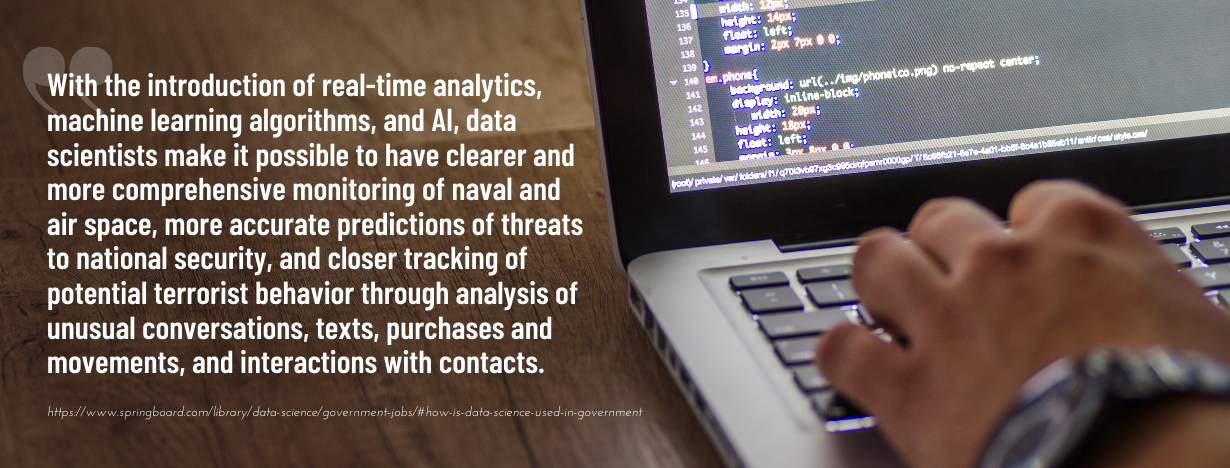
Technology has never been this powerful. Universities are constantly improving their online offerings, and more and more schools are offering online data science courses. Although opinions may vary, some employers prefer to hire applicants with online degrees, especially now that accredited universities have begun to offer these programs.
Technology has driven colleges and universities to offer online courses. Some schools allow their educators to personalize the program based on a student’s pace and understanding. Students can communicate quickly with their professors with online classes or set up a specific time to chat online during office hours.
In addition, most of today’s online programs have frequent assessments. Thus, students get to receive more responses on their development.
More Flexible and Lower Cost. Some programs for online data science have certain conveniences that you cannot find on campus. Online classes are more flexible, especially for professionals who need to balance work and family life.
Most online programs are self-paced, so it’s more convenient for you to blend the course into your daily routine. You can prioritize your responsibilities and still work on your classes at a pace that works well for you, sans the added pressure of attending the class at specific times.
And since the program is on an online platform, this helps you save transportation costs since you won’t be commuting to and from the campus.
Networking and Career Changing Opportunities. Having the right network of people can help you with your career success and academic development. Some students feel more comfortable getting in touch with their professors and peers online instead of in an in-person set-up.
And since they are comfortable with this type of setup, it helps them feel less inhibited in participating in live Q&As or forum discussions.
This also results in making stronger connections with their instructors and classmates. Students can easily find career-changing opportunities because of these hassle-free networking options, especially if they network with the right people.
Furthermore, if you have online classes and live close to the campus, you can easily visit your instructors, join job fairs, social clubs, networking events, and even meet with career counselors. But if you’re far from the location, remember to consider attending events and meetups with industry experts to build the necessary connections.
Data Science Have More Online Degree Options. From data science boot camps to college degree programs, online data science programs have gradually evolved. So many universities have come up with an interactive and engaging online curriculum to attract a wider global audience.
With better student experience, lower total cost, and overall flexibility, it’s about high time to consider getting an online degree in data science.
Which field is Data Science most used?
Data science is most commonly used in the fields of healthcare, finance, marketing, e-commerce, retail, and cybersecurity. It is also used in many other areas, such as artificial intelligence, machine learning, natural language processing, and text mining.
RELATED: Best Online Data Analytics Bachelor’s Degree Colleges

